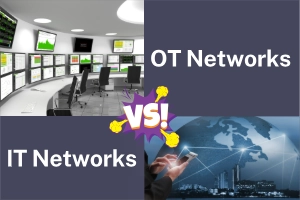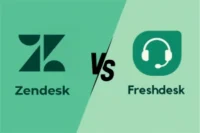Key Comparison Between Unix and Linux
Published: 7 Jan 2025
Unix and Linux are two powerful operating systems that have shaped the world of technology in different ways. While Unix was the pioneer, setting the stage for modern computing, Linux come out as its open-source successor, offering creativity and flexibility.
Whether you’re a tech lover, a developer, or someone curious about these systems, understanding their differences can help you make informed choices.

Let’s dive deeper into how these two operating systems compare in terms of design, application, and usability.
Unix vs Linux: Key Comparison
Unix and Linux are two widely known operating systems that have shaped the computing world. While they share some similarity, they differ in origin, licensing, purpose, and use cases. Below is a comprehensive comparison between Unix and Linux based on several factors:
1. Origin
Unix: Developed in the late 1960s at AT&T’s Bell Labs by Ken Thompson, Dennis Ritchie, and others. Initially written in assembly language, later rewritten in C for better portability. Unix is the predecessor of many modern operating systems.
Linux: Created in 1991 by Linus Torvalds as a free and open-source alternative to Unix. Built using the Unix philosophy but is not directly get from Unix code. Initially inspired by Minix, a Unix-like OS for educational purposes.
2. Licensing and Cost
Unix: Unix is proprietary software, meaning it requires a license to use. Licensing costs are often high, making it an option primarily for enterprises with useful budgets.
Linux: Linux is open-source and licensed under the GNU General Public License (GPL). This allows anyone to download, use, and modify it for free. Its cost-effectiveness is one reason for its global adoption in businesses and among individual users.
3. Operating System Design
Unix: Unix follows a monolithic kernel design, which means the entire operating system works as a single large process in memory. While this design ensures stability, it limits flexibility.
Linux: Linux also uses a monolithic kernel, but it is modular and highly customizable. Users can load and unload specific modules, tailoring the system to their needs.
4. Supported Platforms
Unix: Unix was initially developed for specific hardware platforms. Even today, its compatibility is limited to certain systems like IBM, HP, and Oracle.
Linux: Linux shines in this area, supporting a wide range of platforms, from personal computers and servers to embedded systems and mobile devices. Its flexibility ensures it can run on almost any hardware.
5. User Base
Unix: Unix is mostly used in enterprise environments, legacy systems, and industries that require high stability and security, such as telecommunications and banking.
Linux: Linux has a much broader user base. It is used for personal computing, web servers, cloud computing, IoT devices, and even supercomputers. Its scalability and creativity make it a go-to choice for a variety of users.
6. Usage and Applications
Unix: Unix is often used in industries that need robust, time-tested systems. For example, it powers large databases, ERP systems, and scientific simulations.
Linux: Linux is versatile and powers a wide array of applications, from hosting websites and running enterprise servers to supporting Android smartphones and IoT devices.
7. File System Structure
Unix: Unix uses a hierarchical file system that is rigid and consistent across various Unix versions.
Linux: Linux also follows a hierarchical file system structure but offers more flexibility. It supports various file systems such as ext4, XFS, and Btrfs, making it adaptable to different use cases.
8. Command-Line Interface
Unix: Unix commands are consistent and powerful but may differ slightly across different Unix variants like AIX or HP-UX.
Linux: Linux commands are largely Unix-like but come with additional GNU tools, making them more versatile and user-friendly.
9. Kernel Architecture
Unix: Unix kernels are stable but less flexible when compared to Linux. Kernel updates in Unix are infrequent and controlled by vendors.
Linux: Linux kernels are updated regularly, driven by a global community of developers. This ensures continuous improvements in performance, security, and hardware compatibility.
10. Security Features
Unix: Unix is known for its robust security, which is crucial in enterprise settings. However, security updates are vendor-driven and may not be frequent.
Linux: Linux also offers strong security and benefits from frequent updates. Its open-source nature allows developers worldwide to quickly patch vulnerabilities, making it a secure choice.
11. Updates and Maintenance
Unix: Updates in Unix systems are controlled by vendors and often require significant downtime for implementation.
Linux: Linux updates are community-driven and can be implemented with minimal disruption. Users have the flexibility to customize updates based on their needs.
12. Community and Support
Unix: Unix support is vendor-specific, meaning users rely on the company that provides their Unix version for assistance.
Linux: Linux has a vast global community offering forums, documentation, and support. Additionally, professional support is available through organizations like Red Hat and Canonical.
13. Performance and Scalability
Unix: Unix systems are designed for high-performance computing but are less scalable for modern distributed systems.
Linux: Linux excels in both performance and scalability, making it suitable for everything from lightweight devices to large-scale data centers.
Use Cases of Unix and Linux
Let’s talk about the use cases of unix and linux one by one:
Unix Use Cases
- Enterprise Servers: Commonly used in large-scale enterprise systems, particularly in banking, telecommunications, and healthcare. Supports critical applications like Oracle databases and SAP.
- Mainframes and Supercomputers: Unix systems are used for stability and performance in mainframes.
- Proprietary Environments: Organizations that rely on specific hardware and software integrations often use Unix due to its tight coupling with hardware.
- Telecommunications: Widely deployed in systems requiring high uptime and real-time capabilities.
- Legacy Systems: Many organizations with legacy applications and infrastructure continue to use Unix to avoid migration costs.
Linux Use Cases
- Web Servers: Linux dominates web hosting, with distributions like CentOS, Debian, and Ubuntu powering most servers. Common platforms: Apache, Nginx, and cloud-native systems.
- Cloud Computing: Key OS for cloud platforms like AWS, Google Cloud, and Azure due to scalability and support for containerization tools (e.g., Docker, Kubernetes).
- Supercomputers: Over 90% of the world’s supercomputers use Linux due to its efficiency and customizability.
- Embedded Systems: Used in devices like smart TVs, routers, IoT devices, and automotive systems (e.g., Android Auto).
- Desktops: Preferred by developers, sysadmins, and security professionals for its flexibility and robust development tools.
- Mobile Devices: Android, a Linux-based OS, powers billions of smartphones globally.
- Scientific Research: Utilized for high-performance computing (HPC) in academia and research labs.
- DevOps and Automation: Foundation for CI/CD pipelines and infrastructure-as-code tools like Ansible and Terraform.
Market Share of Unix and Linux
In this section we’ll discuss the market share of unix and linux:
Unix Market Share
- Declining Usage: Unix market share has declined over the years as Linux and Windows have become more dominant. Estimates suggest Unix holds 5–10% of the server market.
- Industry-Specific Usage: Unix still maintains a foothold in industries like banking, telecommunications, and government, where legacy systems are prevalent.
- Vendors: Key vendors like IBM (AIX), Oracle (Solaris), and Hewlett-Packard (HP-UX) maintain Unix systems for existing customers but are not widely adopting new deployments.
Linux Market Share
- Server Market: Linux dominates with an estimated 30–40% of the global server market, thanks to its use in data centers and web hosting.
- Supercomputers: Linux powers over 90% of the world’s top 500 supercomputers.
- Cloud Platforms: Nearly all cloud services rely on Linux due to its lightweight and scalable nature.
- Desktops: Linux accounts for ~2.5% of the desktop market, a niche segment but growing in popularity among developers and tech enthusiasts.
- Mobile Devices: Android, based on Linux, holds a market share of over 70% in the global smartphone OS market.
- Embedded Systems: Linux is extensively used in embedded systems, with an estimated market share of 60–70% in IoT devices and consumer electronics.
Future Trends for Unix and Linux
Here we’ll explore the future trends for unix and linux:
Unix Future Trends
- Continued Decline: The market share for Unix is expected to shrink further as more organizations migrate to Linux or cloud-based solutions due to cost-efficiency and flexibility.
- Legacy System Maintenance: Unix will remain relevant in industries with critical legacy applications (e.g., finance and telecommunications) that are costly to migrate.
- Vendor-Specific Support: Unix vendors like IBM (AIX) and Oracle (Solaris) will continue to provide extended support and updates for existing customers rather than developing new features.
- Specialized Use Cases: Unix may retain a niche role in highly secure, tightly controlled environments requiring proprietary hardware and software integration.
- Potential End-of-Life for Some Flavors: Certain Unix flavors (e.g., Solaris) may reach end-of-life as vendors redirect resources to Linux or other technologies.
Linux Future Trends
- Growth in Cloud and Edge Computing: Linux will continue to dominate cloud platforms and edge computing environments due to its scalability and compatibility with containerization and orchestration tools.
- Expansion in AI and Machine Learning: Linux-based systems will be critical for AI/ML workloads, as they provide robust environments for training models and deploying AI solutions.
- IoT and Embedded Systems: Linux will expand further in IoT devices, smart home technologies, and automotive systems, offering lightweight, secure, and customizable solutions.
- Adoption in Enterprise IT: Enterprises will increasingly adopt Linux for server consolidation, DevOps, and hybrid cloud infrastructure.
- Security Enhancements: As cyber threats grow, Linux will evolve with improved security features, including better support for secure boot, encryption, and container security.
- Rise of Linux on Desktops: Linux desktop adoption may see gradual growth, driven by improvements in user interfaces, gaming support (e.g., Steam Deck and Proton), and privacy-conscious users.
- Dominance in Supercomputing: Linux will maintain its dominance in supercomputing as new technologies like quantum computing emerge, requiring highly customizable operating systems.
- Automation and DevOps Tools: Linux will remain central to CI/CD pipelines, infrastructure-as-code, and automation tools like Kubernetes, Ansible, and Terraform.
- Hybrid and Multi-Cloud Deployments: With the rise of hybrid and multi-cloud strategies, Linux will play a key role in ensuring interoperability across diverse cloud environments.
- Community-Driven Innovation: Linux will benefit from ongoing community contributions, ensuring rapid innovation, feature updates, and bug fixes.
Conclusion
Unix and Linux are foundational pillars in the tech world, each serving unique purposes. Unix is a tried-and-true system, often used in enterprise settings and legacy applications, valued for its stability and security. On the other hand, Linux, with its open-source nature, has become a favourite for developers, businesses, and even hobbyists due to its adaptability and cost-effectiveness.
Choosing between Unix and Linux depends on your specific needs—whether it’s robust enterprise operations or flexible, community-driven solutions. With Linux steadily growing in popularity and Unix gradually fading, the open-source model seems to be the way forward.
FAQs about Unix and Linux
Here are some of the most Frequently Asked Questions related to Unix and Linux:
The main difference lies in licensing and availability: Unix is proprietary, while Linux is open-source and free. Unix is older and hardware-specific, whereas Linux is hardware-independent and highly versatile.
Linux can replace Unix in most scenarios due to its flexibility and cost-effectiveness. However, Unix remains in use for legacy systems and specialized applications where migration is challenging.
Yes, Linux is better for beginners due to its user-friendly distributions like Ubuntu and Mint, extensive community support, and free learning resources.
Most basic commands are similar because Linux is modeled after Unix. However, there are differences in advanced commands and features specific to each system.
Both are secure, but Linux’s open-source nature allows quicker responses to vulnerabilities. Unix, being proprietary, depends on vendors for updates and patches.
Unix requires a paid license, often with high costs for enterprise support. Linux is free to use, with optional costs for enterprise distributions or support.
Linux is preferred for servers due to its stability, scalability, cost-efficiency, and support for modern tools like containerization and cloud computing.
Not directly, as Unix and Linux have different kernels. However, compatibility layers like the Linux Compatibility Layer in some Unix flavors may allow certain Linux applications to run.
For Unix, vendor documentation (e.g., IBM or Oracle) and books like “The Unix Programming Environment” are ideal. For Linux, resources include online tutorials, forums like Stack Overflow, and platforms like Udemy, Coursera, and Linux.org.

- Be Respectful
- Stay Relevant
- Stay Positive
- True Feedback
- Encourage Discussion
- Avoid Spamming
- No Fake News
- Don't Copy-Paste
- No Personal Attacks

- Be Respectful
- Stay Relevant
- Stay Positive
- True Feedback
- Encourage Discussion
- Avoid Spamming
- No Fake News
- Don't Copy-Paste
- No Personal Attacks





